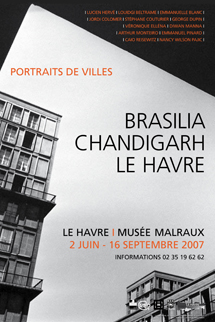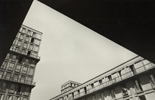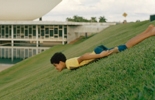Brasilia – Chandigarh - Le Havre
from June 02 to September 16, 2007

What do they have in common? Monumental building projects that reflect the profound convictions of the men who conceived them, resulting in cities renowned today as major works in the world history of architecture and urban planning (Le Havre and Brasilia are listed UNESCO World Heritage Sites and Chandigarh is about to be).
All three were also photographed between 1955 and 1961 by one of the finest "interpreters" of architecture, Lucien Hervé, whose images have been instrumental in showing Europe the face of the new capitals of Brazil and Western Punjab.
Lucien Hervé accompanied Le Corbusier to Chandigarh in 1955 and 1961. After his second voyage, he began a trip around the world that took him to Brasilia, inaugurated the year before. In the meantime, Lucien Hervé was commissioned by the Direction Générale du Tourisme in 1956 to photograph Le Havre, which was still undergoing reconstruction two years after the death of Auguste Perret.
Over fifty years later, the Musée Malraux brings together around sixty prints by Lucien Hervé, a mix of vintage and modern shots taken under his direction.
Alongside these historical photographs by Lucien Hervé, the exhibition also presents over one hundred works by ten contemporary photographers and one videographer, produced in Brasilia, Chandigarh and Le Havre between 1999 and 2007. Their creations prove—if proof were needed—that these cities are, still today, tremendous subjects of debate, rich and complex territories to explore, the envy of many artists who yearn to "go there" and see them "through their own lens".



